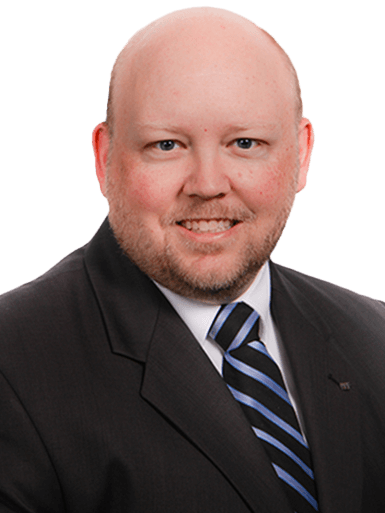Why More Business Owners Are Turning to ESOPs for Succession
More business owners are turning to employee stock ownership plans (ESOPs) to ensure continuity, reward long-serving team members, and transition out with intention. Unlike sales to outside buyers, ESOPs keep ownership within the company, preserving institutional knowledge and culture. Beyond continuity, ESOPs provide a pathway to liquidity that aligns with both financial goals and legacy. Because employee ownership reshapes a company’s foundation, careful planning and open communication are critical to success.
How ESOPs Support a Smooth Succession
An ESOP can serve as a bridge between the legacy an owner built and the future they envision. Structured thoughtfully, it becomes a succession plan that maintains business continuity, reassures clients, and keeps key team members in place. This is especially meaningful in industries where long-standing relationships and deep institutional knowledge define a company’s value.
Owners exploring liquidity will find the ESOP structure flexible. Proceeds may be distributed over time—often through a blend of bank financing and internal cash flow—and under current tax law, may qualify for capital gains deferral if reinvested in qualified assets. This creates a powerful opportunity to preserve wealth while supporting a deliberate transition. The transition itself can be gradual or immediate depending on personal goals. Either way, early alignment among leadership and close collaboration with advisors is essential to navigate legal and financial complexities.
Company culture also benefits. With leadership often unchanged and operations continuing smoothly, clients and team members experience stability. Ownership passes to those who know the business best and care about its direction. Transparency and employee education help the shift take hold, building long-term engagement.
Some companies treat the ESOP as the first step in a longer strategy. Over time, they may pursue a sale to private equity or another third party. Because the ESOP structure allows for phased exits, owners can remain involved as the company grows under employee ownership and then step away fully on their terms. This gives owners time to support growth under employee ownership then transition fully when the time is right.
A Stronger Business, Engineered for Resilience
ESOPs can enhance financial strength from day one. When structured as an S corporation, the share of income attributable to the ESOP is exempt from federal income tax—freeing up cash that can be used to pay down debt, reinvest in operations, and build resilience in uncertain times. That added liquidity helps the business preserve long-term value and remain steady for team members and clients.
It also strengthens personal outcomes for sellers. Instead of a one-time taxable event, an ESOP gives owners the option to reinvest proceeds in qualified assets and take a longer view of their financial future. This flexibility may support stronger retirement outcomes—particularly for those focused on wealth preservation and long-term planning.
While establishing an ESOP involves upfront legal and administrative costs, the structure tends to run smoothly once in place. Ongoing tax advantages further support financial stability. Lenders often view ESOP-owned businesses as lower risk, increasing the likelihood of financing. Sales can be funded through a mix of bank loans and seller notes, offering flexibility to structure the transition in a way that fits the company’s needs.
What types of businesses are best suited for an ESOP?
ESOPs are best suited for companies with financial strength and cultural readiness. Businesses that tend to succeed share these traits:
- Consistent profitability, healthy cash flow, and manageable debt
- Leadership already in place with middle managers or executives handling daily operations
- Owners planning a gradual transition, not an urgent exit
- A commitment to independence, preserving culture, values, and operating model
- Capacity to support ongoing contributions that fund and sustain the ESOP
These businesses often have clear succession plans and a history of investing in long-term value. An ESOP suits owners seeking to preserve their legacy, retain control through a phased transition, and recognize the people who helped build the company.
That recognition matters. Employee ownership tends to thrive in cultures that value transparency, participation, and shared purpose. When team members understand how their work contributes to broader goals and see a tangible stake in the outcome, engagement deepens and retention improves.
For owners who prioritize continuity, culture, and rewarding long-serving team members, an ESOP offers a thoughtful way forward. As part of a phased exit strategy, it also supports long-term financial planning and business resilience. With growing adoption by leading firms, employee ownership is emerging as a practical and increasingly recognized path for business succession.
How We Help
AAFCPAs’ Business Transaction Advisory and Individual & Family Tax practices along with AAF Wealth Management work in tandem to support proactive, well-structured ownership transitions. Whether you are exploring an ESOP, planning a third-party sale, or considering phased succession, we help you evaluate options, preserve business continuity, and align decisions with your long-term financial goals. Our team brings together transaction strategy, tax planning, and wealth preservation to help you transition on your terms—with clarity, confidence, and a clear path forward.
These insights were contributed by Joshua England, LLM, Esq., Partner & Tax Attorney. Questions? Reach out to our author directly or your AAFCPAs partner. AAFCPAs offers a wealth of resources on tax strategies and wealth preservation along with exit/transaction planning. Subscribe to get alerts and insights in your inbox.

